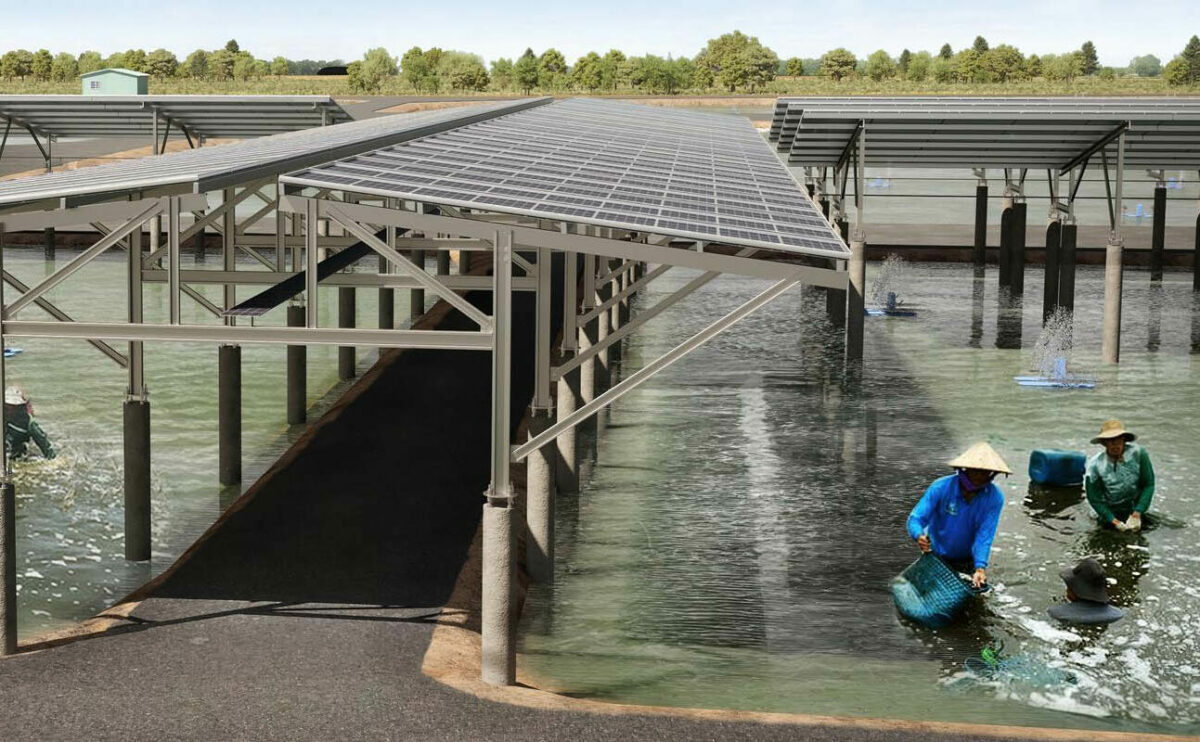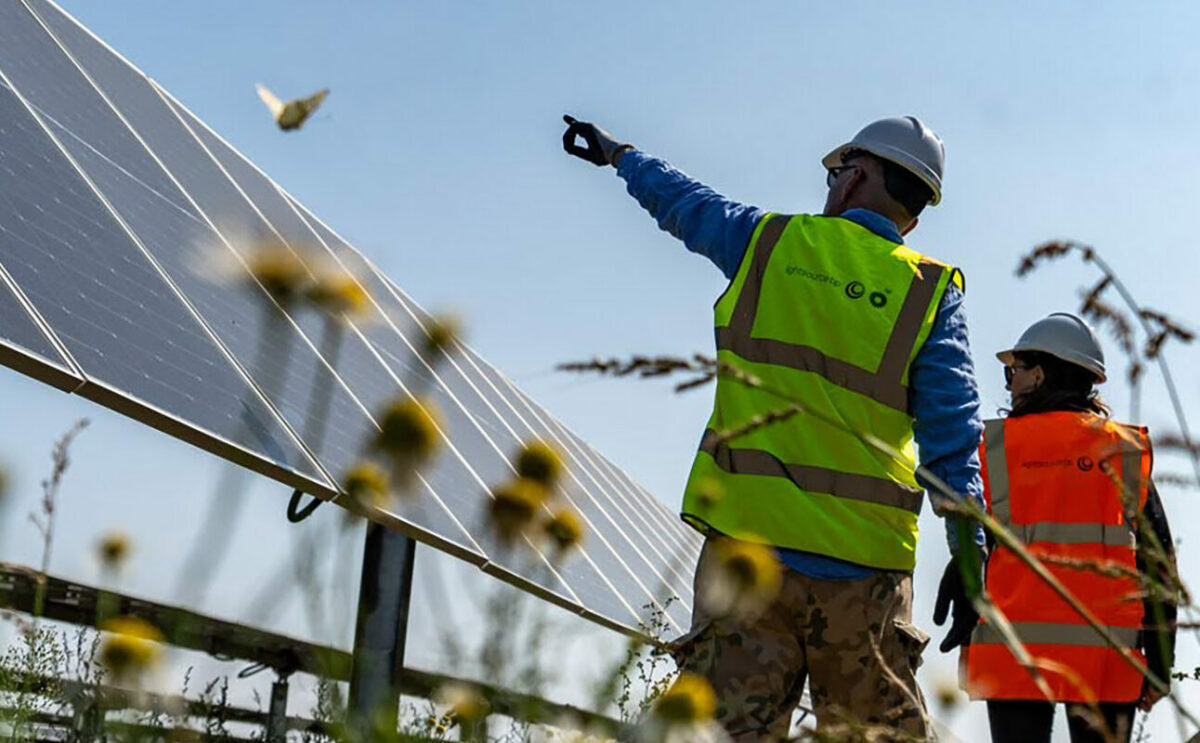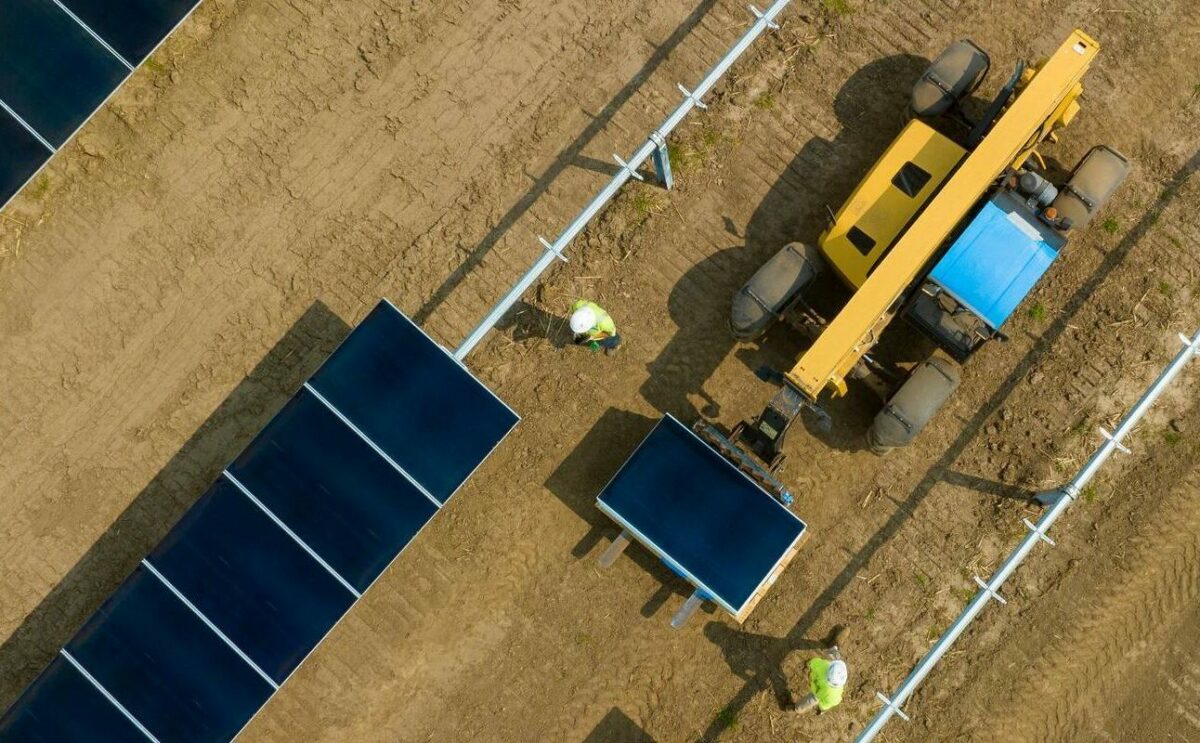Solar PV vs Solar Thermal System – Which One Should I Use?
The advantages of both types of solar panels and how they can work together
The principle behind both types of solar panel – solar photovoltaic (PV) and solar thermal – is the same. They absorb raw energy from the sun and use it to create usable energy.
In solar PV systems this is through the creation of electricity, whereas thermal systems are used directly for heating water or air. For many households there is no need to decide which of the two technologies is better as they can be used in tandem. For businesses and landowners the debate is slightly different, as the main goal is to get a return on investment or generate a sustainable second income.
In this article we look at the advantages of both of these solar panels in isolation, before looking at how they can be used together.
Advantages of Solar PV
Lightsource bp uses Solar PV for its rooftop installations. Though solar PV has a higher capital cost than solar thermal, the government has offset this with initiatives such as the Feed-In-Tariffs, which has made them an attractive long-term investment. With the cost of solar panels decreasing, as well the rising cost of energy on the grid, many people are seeing solar PV as a sound investment which can also add value to their home, as a means of safeguarding their future energy costs and as a way of significantly lowering their carbon footprint.
Solar PV has a big advantage over solar thermal in that it generates electricity, whereas solar thermal is dedicated to heating water or air. This allows solar PV owners to sell excess electricity back to the grid and generate a sustainable second income. When solar PV panels are installed on commercial rooftops or on farmland — a service that Lightsource offers — huge savings can be made on electricity, due to the scale of the installation and the amount of electricity that can be generated.
Recent controversy linking solar thermal farms to bird deaths is potentially another reason to favour solar PV technology over solar thermal for large solar farms. However, it’s best not to make any conclusions until further research has been carried out.
Advantages of Solar Thermal
Traditionally solar thermal had an advantage over solar PV as it was cheaper, but the Feed-In-Tariffs changed this (even when taking into consideration the Domestic RenewabIe Heat Incentive) to make the two systems comparative. In the current climate the two systems are relatively priced, which means that the main reason to opt for solar thermal is for the space that it saves.
As a comparison, a solar PV system could take up to 10m2 of roof space as opposed to just 3m2-4m2 for a solar thermal system. This is due to its high efficiency. Solar thermal can turn around 90% of radiation into heat, whereas solar PV has an efficiency of between 15% and 20%, though improvements in panel technology is seeing this number consistently increase.
Advantages of Solar PV and Thermal Systems Together
As many households want their solar panels to provide them with hot water, and seeing as solar thermal systems are dedicated to doing this, many people are installing both types of solar panels. An example on the Energy Savings Trust website saw one homeowner install 12 solar PV panels to generate electricity and two solar thermal panels for hot water, allowing them to make the most of the efficiency of solar thermal for their hot water needs, while utilising the solar PV for other uses and allowing for the possibility of selling any excess electricity — especially the case during the summer — back to the grid. New hybrid panels which use both solar PV and solar thermal within the same unit will see these hybrid systems become more common in households.
If you have a commercial rooftop or piece of land that you would like to use for generating solar energy and would like to know what is your best option, please get in touch with Lightsource. Our solar projects could help you make a guaranteed saving on your energy costs or even generate a second income.
News
18 Dec, 2025
Energy in Focus – In-house cross-functional teams building quality projects
Ric Hatton, Director of Delivery for EMEA, has spent most of his career in power generation industry, with a keen interest in managing utility-scale renewable projects.
04 Dec, 2025
Energy in Focus – How local partnership and community engagement sparks project success
At Lightsource bp, we deliver renewable energy and storage solutions while seeking to enhance ecosystems, local economies and progressing a sustainable supply chain.
20 Nov, 2025
Energy in Focus – Building a culture of safety at Lightsource bp
In our first Energy in Focus episode, Will Manchas, Head of HSE for USA and EMEA shares how our Golden Rules help us protect ourselves and others.
22 Oct, 2025
Lightsource bp supports Apple’s renewable energy projects progress across Europe
Lightsource bp is proud to partner with Apple Inc. in support of its goal to achieve carbon neutrality across its entire footprint by the end of this decade.
21 Oct, 2025
Environmental safety in action: living our Golden Rules
At Lightsource bp, our Golden Rules are daily practices that protect our people and ensure business continuity, especially in the face of climate extremes.
17 Oct, 2025
USA: Lightsource bp and Pinnacle Financial Partners announce $97.9M tax equity deal for Peacock Solar
Lightsource bp and Pinnacle Financial Partners today announced the closing of a $97.9 million tax equity deal to finance the 187 MW Peacock Solar in San Patricio County, TX.
18 Sep, 2025
Australia: Lightsource bp advances its first solar and storage hybrid project
Lightsource bp has commenced delivery on one of the first large-scale DC-coupled solar-battery hybrid projects in Australia.
15 Aug, 2025
Resetting and recharging – what we did for Wellbeing Day
As part of our promotion of a healthy work-life balance, this year we once again rewarded our team members with an extra day of annual leave to focus on their wellbeing.
31 Jul, 2025
USA: Lightsource bp named the US’s top solar developer
Lightsource bp, a global leader in renewable energy development, has been named the United States’ #1 solar developer by Solar Power World.
14 Jul, 2025
Inspiring future energy leaders: ESCP students explore Manor Farm Eggington
Students from ESCP Business School’s London Campus were invited by Lightsource bp to an exclusive visit to the Manor Farm Eggington in Leighton Buzzard.











